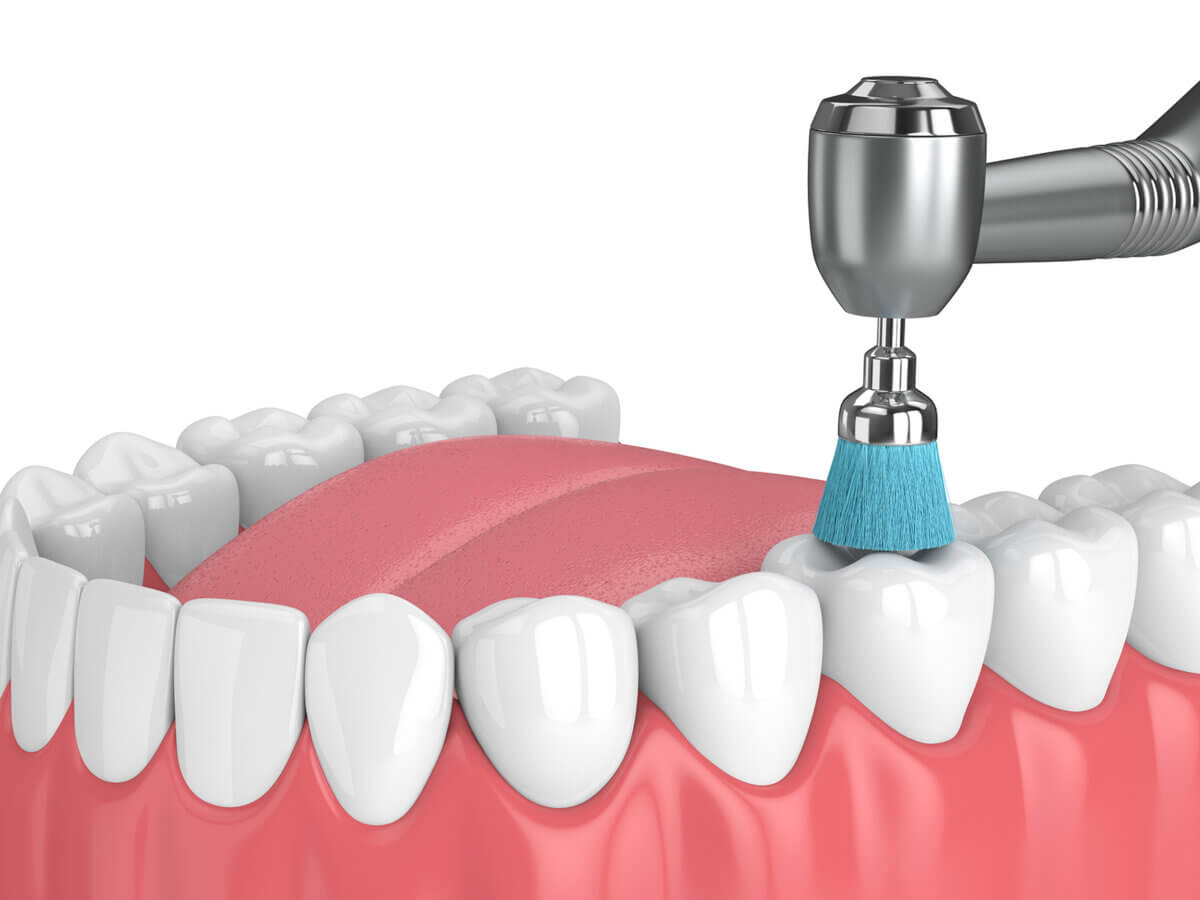Blog
Dental hygiene tips for healthy teeth & gums

Everything You Need To Know About Tooth Polishing
A dental technique called tooth polishing involves using a dental tool or polishing brush to remove plaque and surface stains from the teeth. The procedure helps to give the teeth a glossy, smooth surface that increases their resistance to future stains and bacterial growth.
A routine dental cleaning, or prophylaxis, often includes scaling and root planing to remove calculus and plaque from below the gum line and frequently includes tooth polishing. While It might make teeth look better, it’s vital to remember that it cannot heal gum disease or remove decay. Additionally, since the technique has the potential to hurt or destroy teeth, it is not advised for people who have sensitive teeth or exposed dentin.
Benefits
By removing surface stains and smoothing the surface, tooth polishing gives teeth a brighter, smoother, and cleaner appearance. The advantages include:
- Removal of surface stains: Regular brushing may not always be able to remove surface stains from foods, beverages, and smoking. But, tooth polishing can help.
- Smoother tooth surface: It helps remove small crevices and rough areas on the tooth’s surface that can hold bacteria and plaque, making it simpler to properly clean the teeth.
- Tooth polishing results in fresher breath: It removes the bacteria and plaque that can cause bad breath.
- Better oral health: It aids in preventing decay, gum disease, and other dental issues by eliminating surface stains and smoothing the tooth’s surface.
- It can improve the appearance of teeth, making them appear brighter and shinier.
Cleaning and polishing
When oral germs build up on teeth, a hardened material called calculus or tartar results. Dental disorders may develop as a result. During routine teeth cleaning, a dental hygienist performs scaling to eliminate tartar. The teeth are polished to make them bright and smooth after the tartar is removed. As a final step in preventive dental care, it can also eliminate surface stains from teeth. Other teeth-whitening solutions might be required, if someone desires a more pronounced change in tooth color.
Polishing Techniques for Teeth
It is a painless dental procedure that some patients find delightful. The dental hygienist frequently uses paste and a small supple rubber cup. If you have severe stains, your dentist may use an air-polishing device, which fires pressurized air and water laced with an abrasive material. Another option that helps remove bacteria from exposed roots after dental surgery is therapeutic polishing.
Polishing your teeth at home
There are many commercial and DIY kits available in the market to perform at-home tooth polishing. Activated charcoal and baking soda are two of the most popular natural treatments for enhancing teeth. However, using such techniques could cause tooth decay, sensitivity, and enamel erosion. Therefore, it is advisable to consult a dentist for tooth polishing rather than causing damage to your teeth with at-home teeth whitening kits.
Importance of teeth polishing
The maintenance of healthy oral health includes polishing teeth. It aids in the prevention of tooth decay, gum disease, and other dental issues by removing surface stains and plaque. Additionally, it can help in removing rough or jagged parts from the teeth, which can lessen the chance of plaque accumulation and make it simpler to maintain oral hygiene with routine brushing and flossing. Furthermore, it can make teeth look whiter and more appealing, which can assist in increasing confidence and self-esteem. Overall, a complete dental care programme should include it.
Precautions
Depending on the patient’s specific oral health, it is vital to take measures when polishing teeth. For instance, to prevent increased sensitivity, individuals with gum recession and exposed cementum may need to apply an extra-fine paste. Prior to the operation, any underlying oral conditions such as gum disease, tooth decay, or tooth sensitivity should be treated.
Although it is not a required dental procedure, it can improve the look of teeth and encourage good oral hygiene habits. If a patient is worried about the stains on the surface of their teeth, they should speak with their dentist to see if it is an appropriate solution.


